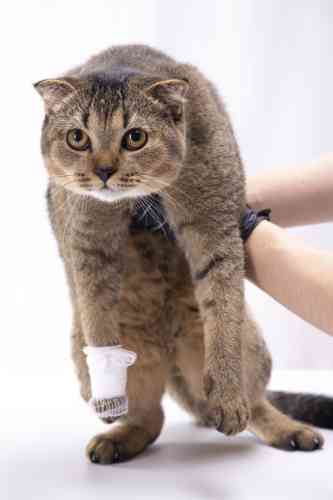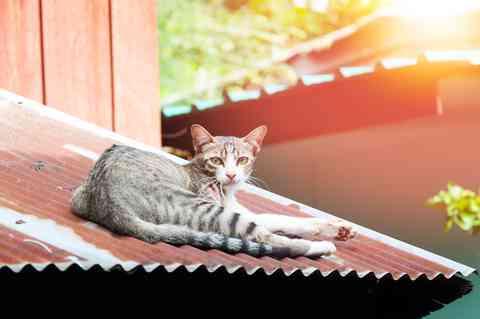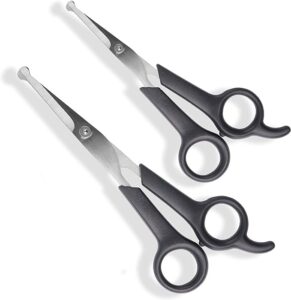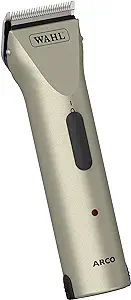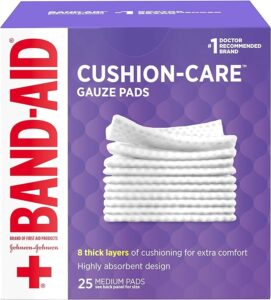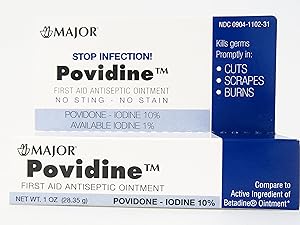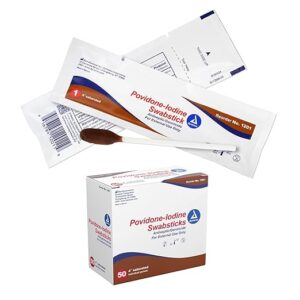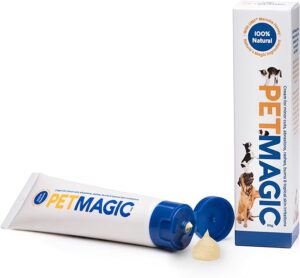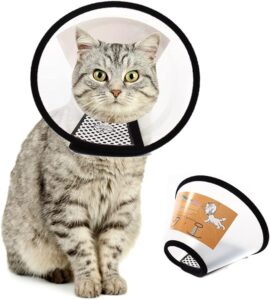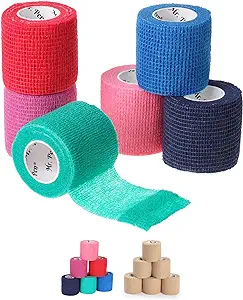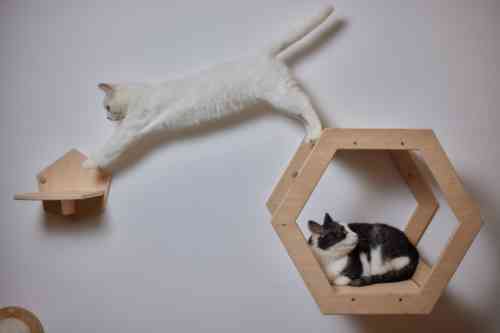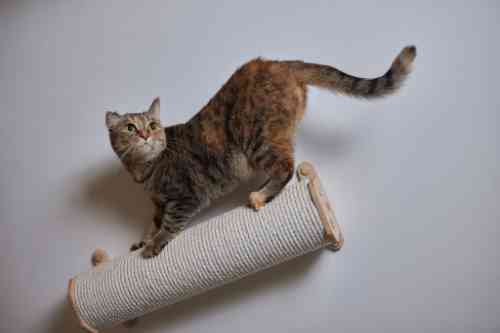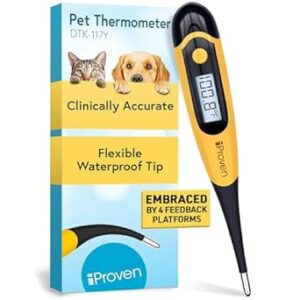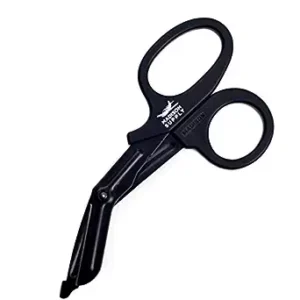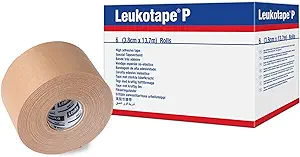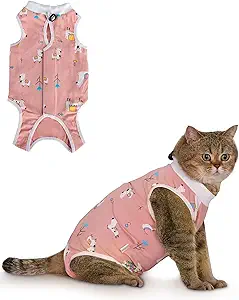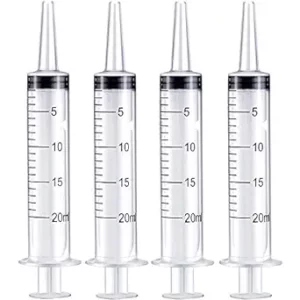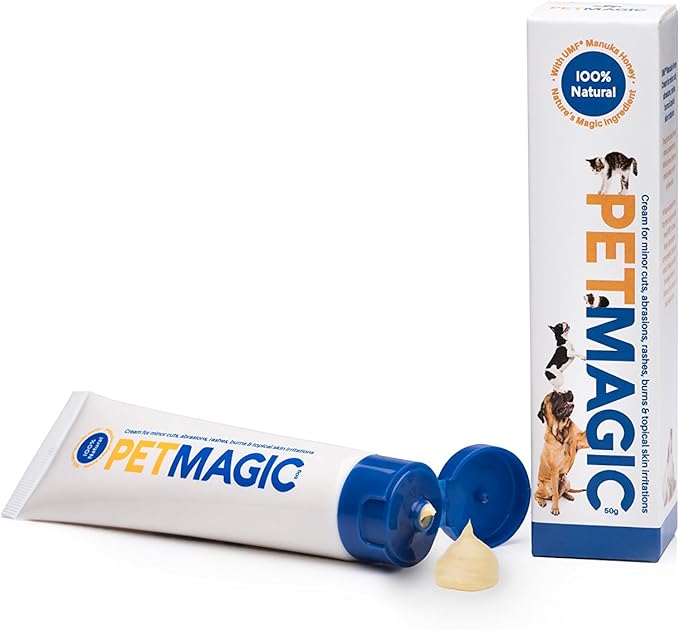Wound on your cat’s paw
Best ways you stimulate healing
It is of course shocking if you suddenly see a wound on your cat’s paw. In this article we will explain more about how you can determine whether you should take your cat to the vet or whether you can treat it yourself. If you come to the conclusion that you are going to treat it at home, we also explain in this text about what you should do and why. We have also included some FAQs in this article and give you advice on what to have in your first aid kit for your cat. Good luck treating the wound on your cat’s paw! With this article, the treatment you give your cat will certainly be the best you can do.
How do I recognize a wound on the paw of my cat?
Your cat probably has a wound on its paw. Otherwise you probably wouldn’t have ended up on this page. You can recognize this by the fact that the skin on your cat’s paw is damaged. In addition to an obvious wound, you may also see the following symptoms:
- The fur has been scraped off
- Blood can be found on the floor or on your cat
- Your cat is limping or has a hopping walk
- Your cat licks its injured paw (excessively)
- Swelling may be visible in his paw
- In older wounds the damaged skin may appear red
- In older infected wounds you may see pus coming out of the wound
What causes a wound on your cat’s paw?
Your cat’s skin is generally quite strong. But every now and then your cat has an accident that causes a wound. The most common causes are other cats, vehicles and barbed wire. As a result of this cause, whatever it may be, one or more layers of the skin become damaged. The deeper the wound, the more blood will come from the wound on your cat’s paw. The wound may also be stretched open in places where the skin is under tension. We also call this a gaping wound or a receding wound. We mainly see this in wounds on your cat’s paw because the skin in that area moves a lot when your cat walks.
What types of wounds are there?
Abrasion
The most superficial wound is the abrasion. The bottom layer of the skin is still intact, but the top layer is abraded. We especially see this when a cat is dragged across the ground. For example, in the event of a collision with a vehicle. These wounds heal quite easily as long as the wound on your cat’s paw does not become infected.
Cut
There are also the cuts. The skin is completely severed. The skin edges in the wound on your cat’s paw are clearly visible and you can usually see the underlying tissues as well. We mainly see muscles and tendons in wounds of the paws in a cat. Since the skin was completely severed, the layer containing the blood vessels was also affected. This wound bleeds initially. This bleeding usually stops after about 5 minutes because blood clots are formed in the damaged blood vessels. Very occasionally, a cut continues to bleed for longer. In that case, a larger blood vessel, a vein, may be damaged. The arteries are very deep in the legs, so they are not damaged very quickly. If this is the case, you will see the blood come out in a pulsating force. In that case, you should immediately go to your vet.
Puncture wound
There also are puncture wounds. A sharp object, for example a cat’s canine tooth, has punctured the skin. The wound on your cat’s paw itself is not large, but it extends completely through the skin and often into the underlying tissues. These wounds can easily become infected, causing a wound infection. On your cat’s paw this is usually in the form of an abscess. This is a cavity that is formed under your cat’s skin because your cat’s body sends pus cells to the bacteria present to clean them up. The cavity is filled with pus. After about 2-3 days the abscess will burst open, releasing a lot of bloody, purulent and smelly mess. This stinks enormously and it is only then that many people recognise the wound on their cat’s paw.
What do you do first when you discover a wound on your cat’s paw?
It is very important to try to stay calm. Even if the wound on your cat’s paw is bleeding. The only reason to act very quickly is if you see a pulsating beat in your cat’s bleeding. The amount of blood will therefore be quite large at that time. In that case, there may be arterial bleeding that you cannot stop yourself. If this is what you see, you should immediately go to your vet.
In all other cases, a fair amount of blood may come out of the wound for a few minutes. Of course, it shouldn’t be a puddle half a meter in diameter, but a small puddle of blood really shouldn’t scare you too much. The bleeding rinses the wound thoroughly, so that is beneficial for the wound. Take that time to calm yourself down. The calmer you are, the better your cat will allow the wound to be treated. So take a few deep breaths and wait about two or three minutes. The bleeding will then have reduced considerably.
When do you go to your vet?
As we wrote above, there is a small chance that your cat has an arterial bleeding. That is when the blood comes out of the wound in a pulsating way. In that case, go to your vet urgently. But also if the wound on your cat’s paw is very deep, larger than half a centimeter in diameter, is open or if your cat has been involved in a collision. In that last case, internal bleeding may also have occurred in your cat’s organs and this must be checked by a veterinarian. Sometimes, bone fractures can also cause a wound in the skin. In that case, your cat’s paw dangles in an unnatural way. Then it is of course better to go to your vet.
Cleaning a wound on your cat’s paw
After you have calmed down as much as possible, try to take a good look at the wound on your cat’s paw. Above we tell you when it is better to decide to go to your vet. But if the wound is not deep, is only smaller than half a centimeter in size, is not extremely open and your cat does not limp too badly, you can also treat it at home. In that case, you must first clean the wound thoroughly.
It is best to first cut or shave away the hair around the wound. The hair will then be unable to stick to the wound in the coming days and thus this way prevents a wound infection. If you use a shaver, you must clean the shaver head very well afterwards. The wound fluid or blood can cause the blades to stick together, making them unusable in the future.
After the hair around the wound on your cat’s paw has been removed, clean the wound. You do this by wetting a gauze compress with some clean tap water and cleaning the wound with it. In countries where the tap water is not optimal, you can first boil the tap water for 5 minutes and let it cool down again. Or you use bottled water. When cleaning the wound, remove all hair from the wound and all other visible dirt such as sand or wood splinters. You can also use clean tweezers (they do not have to be sterile at this point) for this.
Prevent bacterial, viral and fungal infections by disinfecting the wound
There is a good chance that bacteria, viruses or fungi from the environment have entered the wound. These can cause problems such as wound infections or tetanus. That is why it is important to properly disinfect the wound on your cat’s paw. For this, it is best to use a variant that is as less stinging as possible. Because although 70% alcohol disinfects very well, it is extremely painful for the wound on your cat’s paw. There is a good chance that your cat will no longer let you near its wound.
It is better to use iodine/povidone. For this it is best to use the iodine OINTMENT for superficial abrasions and the iodine SOLUTION for deeper wounds. The ointment is easier to use and makes less mess, but it does not reach the deeper parts of the skin as easily. The solution seeps a little more easily into the small corners of the wound. You can apply the ointment to the wound with your finger. You can drip the iodine solution onto the wound or dab it on the wound with a gauze compress.
Keep in mind that licking iodine can cause your cat to have diarrhea. So try to prevent your cat from licking the wound for the next half hour. Put on your cat a protective collar if you have one.
Stimulate wound healing
So, you have now cleaned and disinfected the wound. The worst is over. But it is still wise to treat the wound additionally in the coming days. You can stimulate cell division and tissue repair with wound ointments. Honey ointment is best for this. Honey is known to prevent bacterial growth and contain substances that promote cell division and tissue repair. In addition, it has virtually no side effects and cats often feel comfortable when you apply it to the wound. One of the best honey ointments to use on your cat is the one below. You apply this honey ointment to the wound 3 times a day for 5 days. Afterwards, the wound should look very healthy and clearly healing. But you can also apply it longer than 5 days.
Protect the wound on your cat’s paw
It is preferable to simply let the wound on your cat’s paw air dry. Your cat may also lick it occasionally. He also cleans the wound with this and saliva also contains wound-healing substances. But as you probably know, there are also rough hooks on your cat’s tongue. Newly formed tissue in the wound is still very fragile and vulnerable. The new tissue is easily damaged if your cat starts licking it more than average.
So keep an eye on your cat in the coming days. Is he licking the wound too much? Then put a protective collar on him or a bandage around his paw. Place a gauze compress on the wound and put a self-adhesive bandage over it. This should not be too tight because then you will restrict the blood circulation of the paw. However, if it is too loose, it can easily fall off. Leukotape can be used to stick the bandage to the fur. You can take this off by making the tape a little wet. But don’t make the wound wet.
How do you prevent a wound on your cat’s paw in the future?
Unfortunately, it can never be completely prevented. But by giving your cat as much of a challenge as possible inside your house (instead of outdoors) in the form of climbing and scrambling and other toys, you ensure that he will have less of an urge to go outside. It is also wise to have your male cat neutered so that he will have less of a tendency to fight with other cats. Provide a high fence if you live near a road where cats can easily be hit.
Treating an infected wound in your cat
In principle, a wound will not really become infected and fester if you apply honey wound ointment to the wound twice every day. But we also understand that things sometimes get messy or that your cat is simply very difficult to treat. The wound on your cat’s paw may have become infected.
In that case, it is best to remove any crust that may have formed from the wound (this is very easy with an inflamed wound) and then rub the wound with iodine ointment twice a day for 5-7 days. The wound should be noticeably less inflamed after a day or 2, but it is important that you continue the ointment for at least 5 days. Also keep in mind that your cat may develop diarrhea from iodine, so prevent him from licking the wound by using a collar or bandage.
Frequently asked questions about a wound on your cat’s paw (FAQ)
Your cat’s wound stinks. What now?
If the wound on your cat’s paw smells quite bad, it is most likely an abscess. Your cat’s paw is usually very painful in this case and contains a small opening from which a lot of purulent and bloody fluid can come out. This liquid is the cause of the stench. You can try to put some iodine solution in the opening 3 times a day after massaging out all the formed pus. The amount of formed pus should be a lot less after about 3 days. If not, take your cat to your vet for an antibiotic treatment.
My cat is licking its wound, is this harmful?
Basically, your cat cleans the wound with its tongue. His saliva contains wound-healing substances. So licking it once won’t hurt. But your cat’s tongue is very rough and the newly formed tissue in the wound on your cat’s paw is very fragile. Your cat can therefore hinder wound healing if it licks excessively. In that case, it is better to put a protective collar on him or put a bandage around his paw.
Can my cat go outside with the wound on its paw?
If you have a calm cat, he can indeed go outside. But do you have a fairly active cat that jumps and climbs a lot? Then it is better to keep him indoors so that the skin in which his wound is located moves less. Too much exercise does not benefit wound healing. If your cat is not completely fit, it is better to keep him indoors so that you can keep a close eye on him.
First aid kit for animals
Of course, like many others, you do not have materials in stock to treat your injured cat. That is always the case, unfortunately. To prevent this in the future, here are some useful supplies that you can use to put together as a first aid kit for your cat. Make sure you purchase it preventatively. Then you have it available when you need it. Better safe than sorry. Hopefully you never have the need to use it. Good luck with the wound on your cat’s paw!

